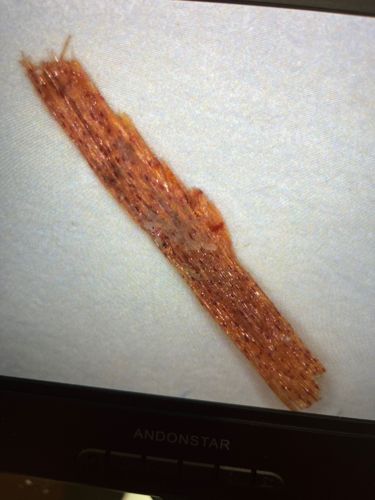Leatherjacket larva (Crane Fly Larva)
Scientific Name: Tipula species
Order & Family: Diptera, Tipulidae
Size: 20-40 mm (0.8-1.6 inches) in length

Natural Habitat
Damp soil, lawns, pastures, and agricultural fields. They thrive in areas with abundant organic matter.
Diet & Feeding
Mainly decaying organic matter, roots of grasses, and other plants. They can be significant pests of turf and crops.
Behavior Patterns
Larvae are subterranean, feeding on roots and organic matter. They are most active at night or during damp conditions. Adult crane flies are short-lived and do not feed significantly. The larvae are often difficult to spot due to their soil-like coloration and burrowing habits.
Risks & Benefits
Risks include significant damage to lawns, golf courses, and agricultural crops (e.g., cereals, vegetables) by feeding on roots. Benefits are minimal in terms of direct human interaction, but they contribute to organic matter decomposition in their natural habitats.
Identified on: 9/5/2025